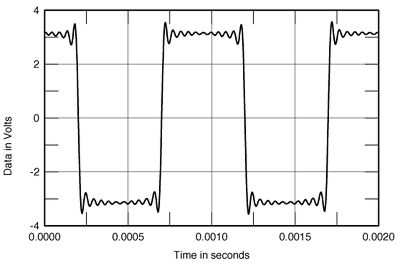My limited understanding is even if we don't directly hear those high frequencies, the hetrodining between them can add a little colour to the timbre of a given instrument. Which may be one reason why some people find 44.1k digital a bit dry or lacking exactly because of the removal of partials above 20k. Wazzzzup made some through-the-nose snark remark last time I brought this up. But, I don't bother with bar-room smugness anyway. But, until someone refutes my naïve thoughts with some actual facts, I'm stickin' to what I think is the case.
Hell, we even talked about this back in engeneering school back in the '80s. The digital experts said things that add up to: Don't worry yer perdy little head about it; 20k is all you need. On the other hand, I talked to some actual sound engineers who felt that pushing the cutoff from 22.05 up to about 50K would have been better in the beginning. So we'd have had to live with perhaps 8" or 10" disks. Some whine about missing the 12" cover of an LP with all the pictures and album credits.
Interesting thoughts you raise there.
I have also discussed this and other SQ issues with quite a few engineers at actual recording sessions of large scale classical symphonic music.
And I have received answers with completely differing opinions.
No names, but one big name in the classical recording business said that "what really matters is 24 bits, but a sampling rate of 44.1 is enough."
Another one said "I can live with 20 bits but a sampling rate of at least 192 khz is vital".
And others say that DSD 256 is the only way to go.
One of them particularly mentioning the very low level spatial cues one hears with acoustic music in a real hall as something DSD 256 captures better than the current rivalling PCM format DXD.
With so much contradictory information from the people actually working with and making recordings I hope I am a bit excused if I am a bit confused ,to say the least.
But I have to say that now with the M Scaler and 24 bits the 44.1 khz sampling rate which I could earlier quite easily hear that it sounded less realistic than 88..2 or 96 and above is NOT a problem any longer for me.
Strings and particularly massed strings which tended to be THE give away with 24/44.1 recordings before M Scaler now tend to sound as good as higher rates to me.
But I still hear a difference between 16 bits and 24 bits.
So when I say HI RES is needed, I now refer to 24 bits over 16 bits
.
M Scaler seems sort out the sampling rate issue for me and my ears/brain.
But Qutest on its own does not!
But what if 32 or 64 bits as recording formats would also make a difference?
And why will Davina record at 768khz?
And in spite of Rob's take on DSD,there are still recording labels and engineers that swear by DSD 256 and claim nothing gets closer to the actual sound of acoustic instruments in a hall than DSD 256?
Some will vehemently defend their stand.
All I can say is that to me DSD can also sound good, even very good if it hasn't been edited.
Both the way Rob does it with M Scaler and natively.
Maybe we are each of us sensitive to slightly different aspects of SQ?
According to one person whose opinions I value,and who has a SOTA system, for Rob Watts depth matters above everything else obviously?
But as I said in an earlier post here at most live concerts I attend, and I attend lots of them, I hear more width than depth.
And to me timbre and tonality of acoustic instruments and the human voice are absolutely paramount.
Sibilance on female voices is not anything I have EVER heard live but with some digital it can be quite a problem.
Anyway ,since I opted out of Canjam this year for live music,I hope to see Rob next year at Canjam or even better, before Canjam Singapore with a DAVINA and some DX amps hopefully with headphone ports included!
Cheers CC























